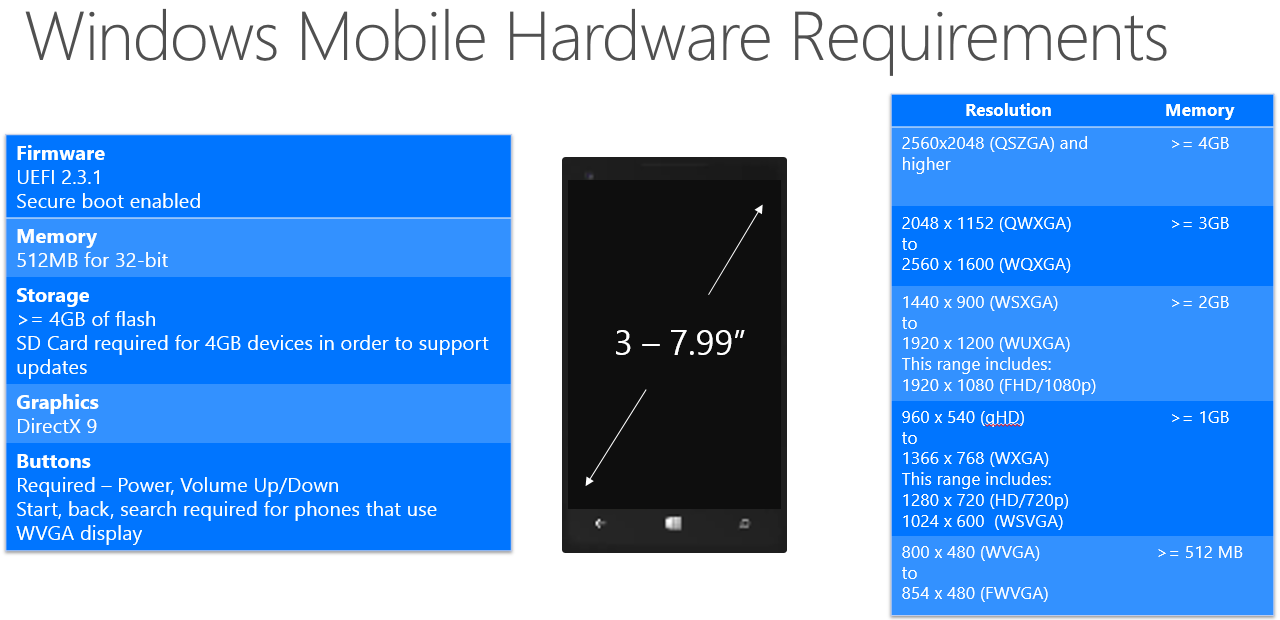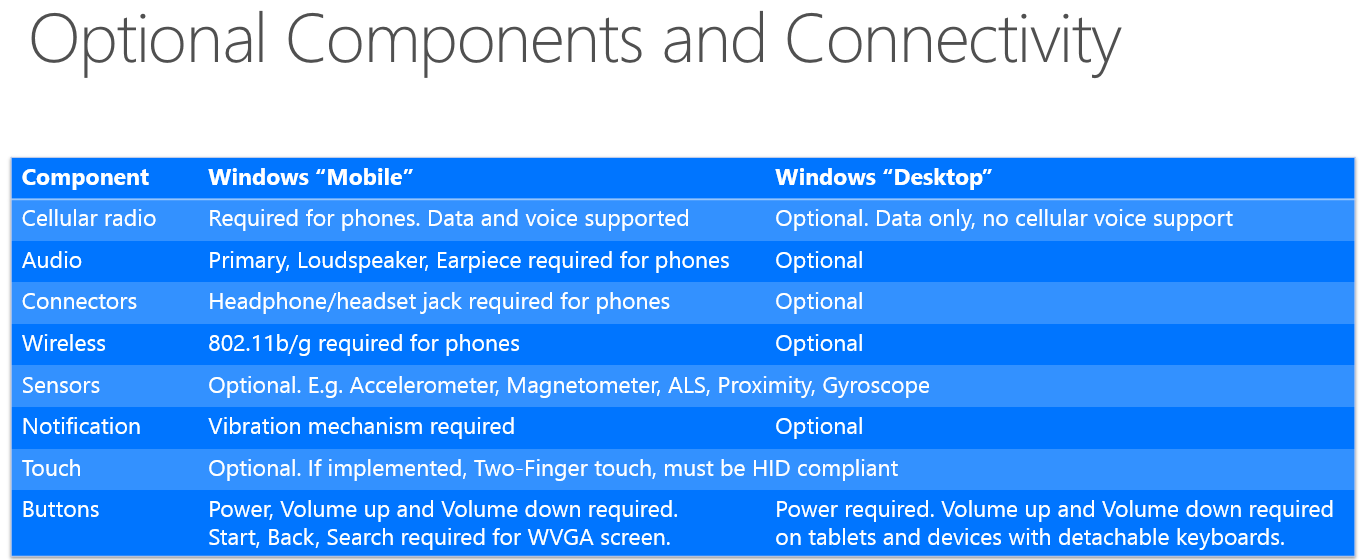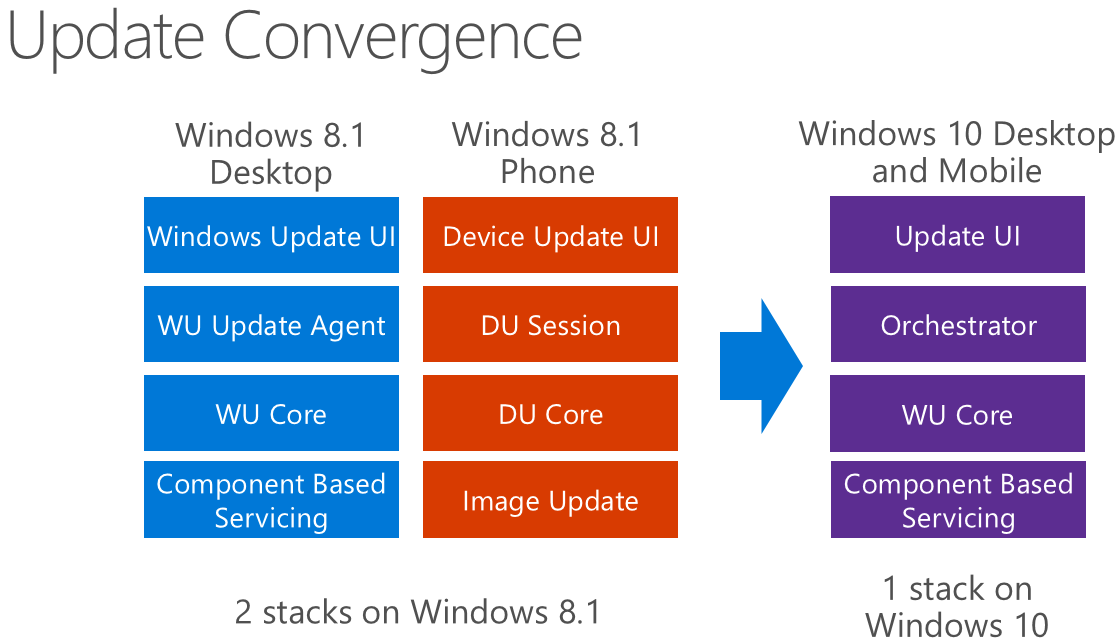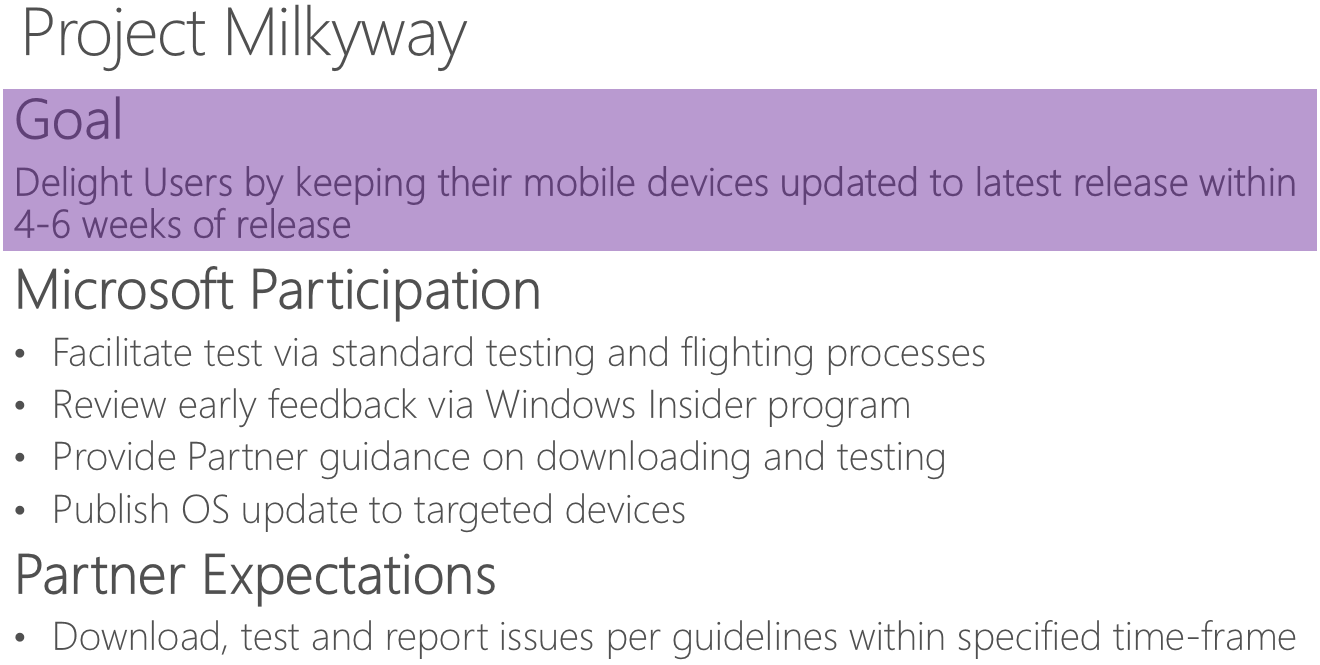A lot of news is coming out of Microsoft’s Windows Hardware Engineering Community (WinHEC) event in Shenzen today. Following details of Windows 10’s worldwide launch this summer, the upgrade paths and hardware requirements for the company’s latest and greatest operating system have been revealed in two sets of PowerPoint slides. Update: Windows 10 will be a free upgrade for pirates, too.
Before you can upgrade to Windows 10, you’ll need to know if your device can handle the new OS. You should also be aware of your available options for the upgrade process (as always, wiping everything and installing Windows 10 from scratch is your safest bet).
Hardware requirements
The presentation “Minimum System HW Requirements & Compatibility for Windows Platforms” (PPTX) details what is needed to run Windows 10 on both desktop and mobile. It doesn’t disclose everything you need to know, but screen size, memory, storage, graphics, and firmware are all mentioned.
Here are the desktop requirements:
This is clearly aimed at computer makers. It’s thus worth adding that the Windows 10 technical preview has these requirements:
- Processor: 1 gigahertz (GHz) or faster
- RAM: 1 gigabyte (GB) (32-bit) or 2 GB (64-bit)
- Free hard disk space: 16 GB
- Graphics card: Microsoft DirectX 9 graphics device with WDDM driver
- A Microsoft account and Internet access
Here are the mobile requirements:
Everything seems to be very similar to what we’ve seen in Windows Phone releases. Apparently a phone with a screen less than 3 inches just won’t cut it.
The optional components for both desktop and mobile are also worth highlighting (phones have stricter guidelines than PCs):
By and large, Microsoft is keeping the same requirements as previous Windows releases. The phone details are arguably more interesting given that the preview is currently limited to just six devices.
Upgrade paths
The presentation “Upgrading to Windows 10” (PPTX) details how Microsoft will deliver Windows 10 for both desktop and mobile. The general rule of thumb is that that the later Windows version you have, the smoother your upgrade path will be.
Here are the possible paths on desktop and mobile:
Windows 7 SP1, Windows 8.1 with the latest updates, and Windows Phone 8.1 can all be upgraded via Windows Update. All Windows 7 and Windows 8.x versions can be upgraded by using an ISO image. Windows RT doesn’t have an upgrade path, though Microsoft has said before that it is planning some sort of update for the almost-dead OS.
Windows 10 will also streamline the update process across desktop and mobile. This should mean faster and more frequent updates across the board.
Last but not least, Microsoft is aiming to get Windows 10 on phones within four to six weeks. Given how carriers typically treat updates, that’s quite a lofty goal.
Official details
The above is unlikely to change, though Microsoft will post even more information once Windows 10 is final and ready for public use. That said, the above should cover almost everything you need to know.
VentureBeat's mission is to be a digital town square for technical decision-makers to gain knowledge about transformative enterprise technology and transact. Learn More







